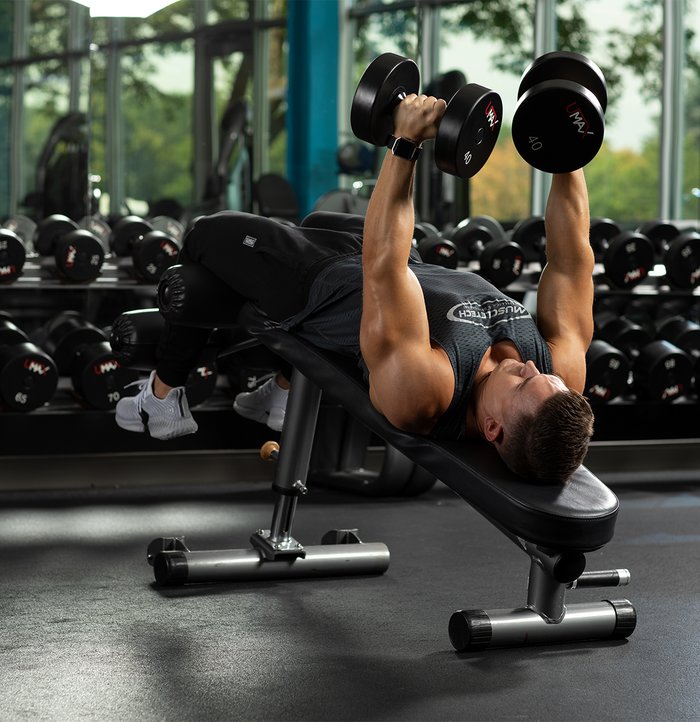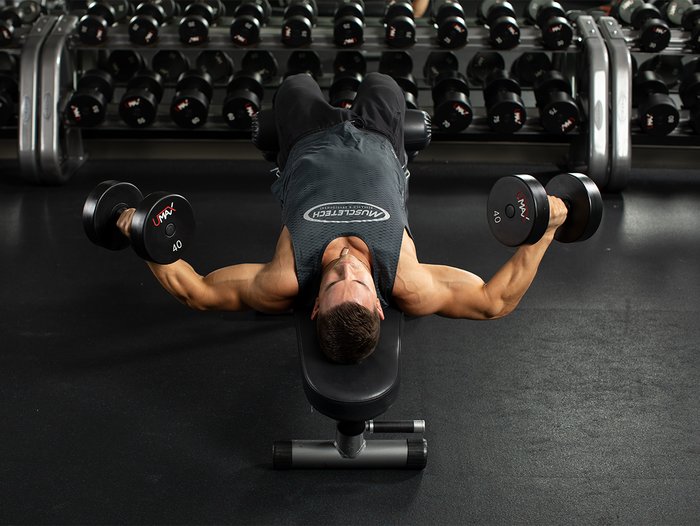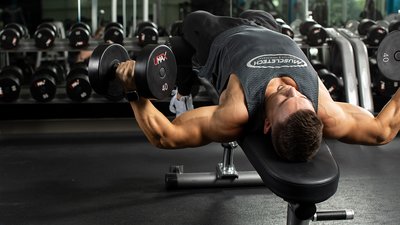Incline movements dominate most chest workouts, and a lot of attention is paid to building the upper chest. Finish up with a few sets on the flat bench and you're good to go, right? Not so fast. You're neglecting one area that is paramount for optimal pec development—the lower pecs.
Many lifters out there don't do enough to work their lower pecs. Fortunately, there's an exercise you can do to target this area and improve your entire chest workout when done first: the decline dumbbell fly.
An Underrated Move For Chest
The decline bench isn't as popular as its incline and flat counterparts. You rarely see it used in today's gyms, and those select few who do use it likely only do so because they can move heavier weight.

But if you're more concerned with building your pecs than building your ego, adding decline flyes to your plan will help you build muscle, maximize function, and even improve your chest exercises.
Working the lower pecs can also help you improve the separation of the pecs from the abdomen—a rarely mentioned feature that can make your pecs pop like crazy. If you compete in bodybuilding shows, or if you just want that classic Arnold physique, this separation is essential for success.
Proper Form For Decline
You can check out how to perform this movement at the Bodybuilding.com Exercise Database. Here are a few extra tips to help you get the most out of this exercise for optimal chest growth.
Ideally, the decline bench should allow you to control the angle. A 30-degree decline will serve you best on this exercise, but you can go up to 45 degrees.
Many lifters typically use more weight for pressing at a decline angle, but avoid this practice on your flyes. If you're using 100-pound dumbbells, then you're missing the point. The primary goal of this chest-builder is to stretch the pecs at the bottom of the move and achieve a quality contraction at the top.

Once you've selected the appropriate weight and gotten into position, try to get as much of a stretch as you can—safely—every time you lower the weights. There's no need to touch the floor, but don't shortchange the range of motion, either. Bonus tip: As you go down to the bottom of the rep, turn your hands so that your pinkies face out. This will help you achieve even more of a stretch in your pecs.
Once you feel that deep stretch you're looking for, it's time to lift the dumbbells back up. As you do, remember to keep the weights over the pecs. It's tempting to lift them up over your head so you can see them, but this recruits the shoulders and takes tension off the pecs. Once the dumbbells are over your chest, turn the dumbbells slightly inward to achieve a little more flex at the top.
Do this exercise at the start of your workout for 3-4 sets of 10-15 reps. This isolation move is a great warm-up to pump blood into the area and pre-exhaust your pecs before the heavier lifting begins.

